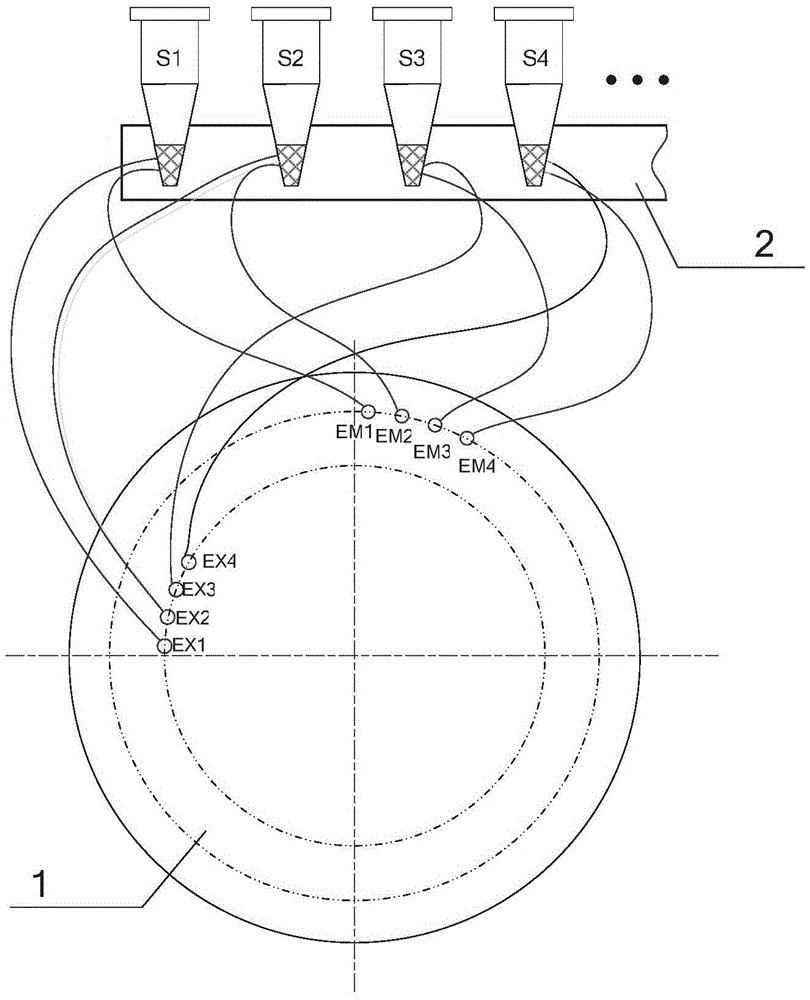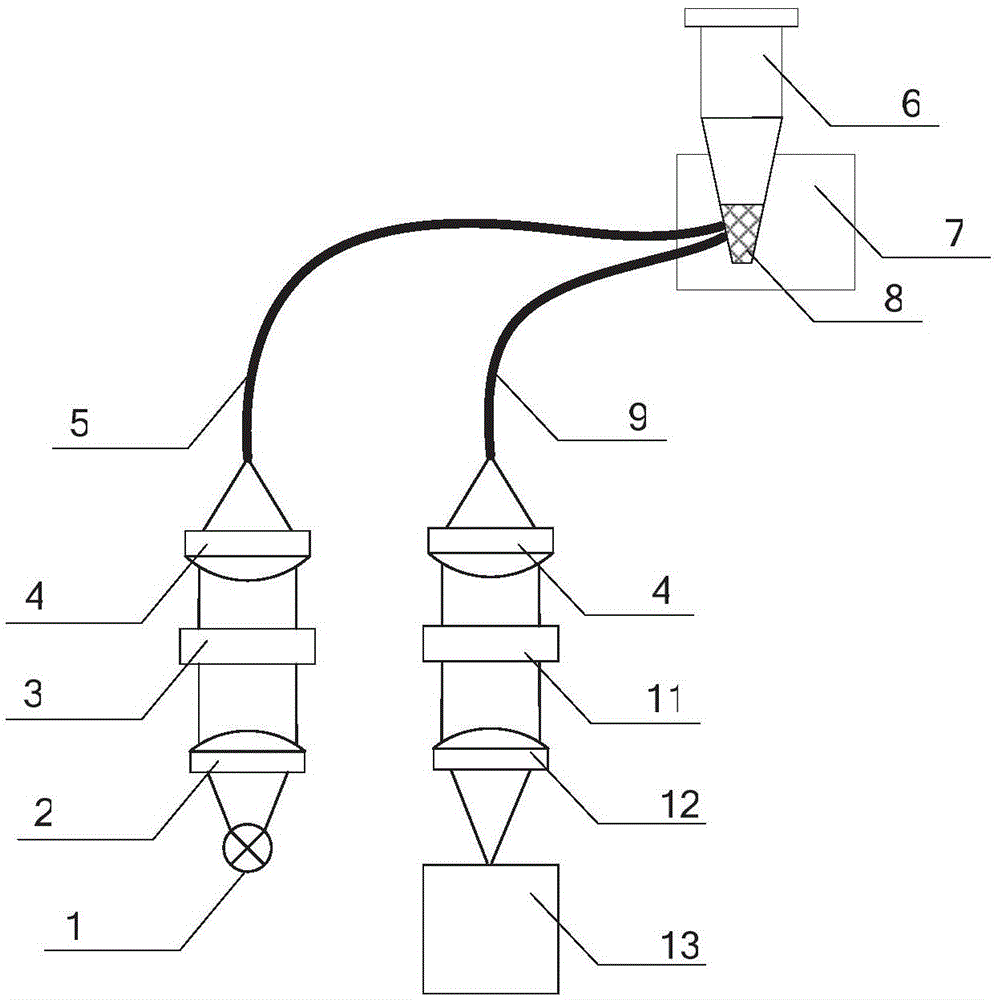Multi-fluorescence channel detection system for real-time fluorescence quantitative PCR
A real-time fluorescence quantification and fluorescence channel technology, applied in the field of multi-fluorescence channel detection systems, can solve the problems of difficult mechanical structure design and processing of the temperature block, reduce the signal-to-noise ratio of the fluorescence signal, and lengthen the fluorescence detection period, so as to shorten the fluorescence detection period. The effect of cycle time, cost reduction, and easy design and processing
- Summary
- Abstract
- Description
- Claims
- Application Information
AI Technical Summary
Problems solved by technology
Method used
Image
Examples
Embodiment 1
[0073] A multi-fluorescence channel detection system for real-time fluorescence quantitative PCR disclosed in Example 1 of the present invention includes: a temperature block 7, a fluorescence detection unit, an optical fiber disk 15 and a turntable 16, wherein:
[0074] The temperature block 7 is used to accommodate the test sample 6, that is, the test sample 6 is inserted into the temperature block 7, and the bottom of the test sample 6 is equipped with a reaction solution 8. The temperature block 7 of this embodiment will control the temperature of the reaction solution 8 to achieve For PCR cycle, one or more test tube holes are arranged on the temperature block 7 .
[0075] Fluorescent detection units, such as Figure 6 As shown, including light source 1, collimating lens / collimating lens group 2, excitation filter 3, dichroic mirror 14, fiber coupling lens / fiber coupling lens group 4, optical fiber 17, detection filter 11, converging lens / Converging lens group 12 and p...
Embodiment 2
[0087] When the light source 1 uses some collimated light sources or light sources with small divergence angles, such as high-brightness LEDs. The collimating lens / collimating lens group 2 may not be needed in the fluorescence detection unit, and the collimated light beam emitted by the light source 1 directly enters the excitation filter 3, such as Figure 15 As shown, the fluorescence detection unit in Embodiment 2 includes a light source 1, an excitation filter 3, a dichroic mirror 14, a fiber coupling lens / fiber coupling lens group 4, an optical fiber 17, a detection filter 11, and a converging lens Converging lens group 12 and photoelectric sensor 13 , other structures and principles are the same as those in Embodiment 1, and reference may be made to the specific description in Embodiment 1.
Embodiment 3
[0089] When the photosensor 13 used has a large photosensitive surface and can completely collect the collimated fluorescent light beam output from the fiber coupling lens 4 , the converging lens 12 may not be used. The fluorescent light beam is filtered by the long-pass dichroic mirror and the detection filter 11 and then directly enters the photoelectric sensor. That is, the fluorescence detection unit in Embodiment 3 includes a light source 1, a collimating lens / collimating lens group 2, an excitation filter 3, a dichroic mirror 14, a fiber coupling lens / fiber coupling lens group 4, an optical fiber 17, a detection filter 11 and photosensor 13, such as Figure 16 As shown, other structures and principles are the same as in Embodiment 1.
[0090] Of course, as yet another alternative embodiment, when the light source 1 uses some collimated light sources or light sources with a small divergence angle, and the photosensitive surface of the photoelectric sensor 13 used at the ...
PUM
 Login to View More
Login to View More Abstract
Description
Claims
Application Information
 Login to View More
Login to View More - R&D
- Intellectual Property
- Life Sciences
- Materials
- Tech Scout
- Unparalleled Data Quality
- Higher Quality Content
- 60% Fewer Hallucinations
Browse by: Latest US Patents, China's latest patents, Technical Efficacy Thesaurus, Application Domain, Technology Topic, Popular Technical Reports.
© 2025 PatSnap. All rights reserved.Legal|Privacy policy|Modern Slavery Act Transparency Statement|Sitemap|About US| Contact US: help@patsnap.com



